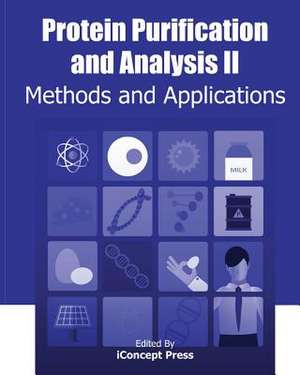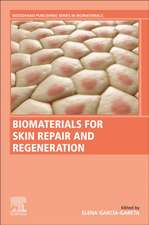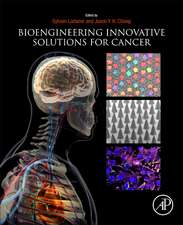Protein Purification and Analysis II
en Limba Engleză Paperback
Chapter 1 describes protein-based methods for the analysis of plant alcohol dehydrogenases.
Chapter 2 demonstrates production of recombinant fungal cell wall-degrading enzymes and their tag-affinity purification and biochemical analyses. Cell wall-degrading enzymes act on cleaving glycosidic bonds of polysaccharides and oligosaccharides, affecting morphological changes, plant-microbe interactions and nutrient acquisition.
Chapter 3 contains a number of methodologies including recombinant protein purification and analysis, enzymatic reporter assays and fluorescent tag detection.
Chapter 4 allows the reader to become acquainted with methods of recombinant expression, purification and determination of the level of activity of staphylococcal epidermolytic toxins.
Chapter 5 discussed the recombinant expression, purification and biochemical analysis of a variety of extremophilic enzymes with potential industrial application.
Chapter 6 discusses tellurite, which is highly toxic for most living organisms. The chapter describes how the mechanism by which this oxyanion exerts its toxicity can be assessed by studying the effect of some metabolic enzymes which seem to help in detoxifying the toxicant.
Chapter 7 describes the principle of, devices used for, protocol for, and mechanism underlying gene introduction.
Chapter 8 outlines a SELEX method for the discovery of a target-specific aptamer. The aptamer is then used to purify the target (SEB) from a mixture of closely related enterotoxins using non-fat dry milk as a representative food matrix.
Chapter 9 proposes an overview of the methodologies employed for the manipulation of membrane protein transporters, from their purification to their reconstitution into proteoliposomes. The authors presented an original approach they developed for the functional study of a multidrug efflux pump responsible for the active transport of antibiotics in bacteria.
Chapter 10 is about the versatility of substrate analogues containing unnatural amino acids in the challenging study of peptidyl-aminoacyl-L/D-isomerases. Enzymes of this class catalyze an exciting post-translational reaction, namely the change of chirality of amino acids within peptide linkage whereby an L-amino acid is converted to the D-isomer.
Chapter 11 investigates the the effects of combined heat and pressure on whole beef muscle proteins and isolated myofibril solubility and protein electrophoretic pattern. It attempts to understand the relative effects of heat and pressure treatments on the proteins of beef muscle.
Chapter 12 reviews the normal synovium including it's microscopic structure, cell origins and recruitment, function and its clinical relevance as a target of immunologic disease.
Preț: 289.21 lei
Preț vechi: 304.44 lei
-5% Nou
Puncte Express: 434
Preț estimativ în valută:
55.34€ • 59.18$ • 46.14£
55.34€ • 59.18$ • 46.14£
Disponibil
Livrare economică 28 martie-11 aprilie
Preluare comenzi: 021 569.72.76
Specificații
ISBN-13: 9781922227638
ISBN-10: 1922227633
Pagini: 212
Dimensiuni: 203 x 254 x 11 mm
Greutate: 0.43 kg
Editura: Iconcept Press
ISBN-10: 1922227633
Pagini: 212
Dimensiuni: 203 x 254 x 11 mm
Greutate: 0.43 kg
Editura: Iconcept Press



























